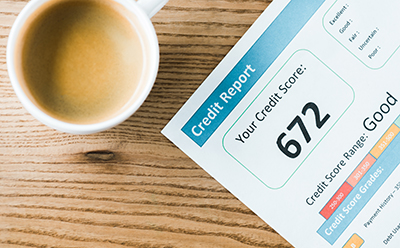30 Days to a Better Budget
It’s the perfect time to put fresh eyes on your finances. Ever checked your account balance and thought, Where did all my money go? You’re not alone. A well-structured budget doesn’t have to be about cutting back — it’s about gaining control, reducing stress, and working toward what matters, whether that’s paying down debt, saving for retirement, or (finally) taking a vacation.

Numbers That Tell a Story
📌 41% of U.S. adults have credit card debt.
📌 Inflation continues to challenge household budgets.
📌 Even though 74% of Americans use budgets, many struggle to stick to them.
The 30-Day Budgeting Challenge
Even when money is tight, small steps can help you regain a sense of control. This challenge is about working with what you have and making a plan that fits your reality.
Week 1: Take Stock (Without Judgment)
- Days 1-2: Gather documents — Collect checking and savings account statements, bills, and income records. If you don’t have access to everything, just start with what you know (like recent pay stubs or receipts).
- Days 3-5: Sort spending into essentials vs. non-essentials — Focus on basics first: housing, food, transportation, and bills. Then, list everything else.
- Days 6-7: Track daily spending — If writing down every dollar feels overwhelming, start small — like noticing where cash disappears fastest (fast food? Gas? Impulse buys?)
Week 2: Think Small
- Days 8-10: Find areas to free up cash — Look for small, manageable changes. Might you cook one extra meal each week in lieu of going out or switch to coffee at home?
- Days 11-13: Commit to one realistic goal — Maybe it’s just covering rent this month or paying one bill in full. Small wins build momentum.
- Day 14: Choose a budgeting style that fits your situation — Decide what budgeting system supports where you’re at. Zero-based budgeting or the 50/30/20 rule are some examples.
Week 3: Adjust and Automate
- Days 15-17: Adjust spending based on what’s possible — Don’t aim for perfection. Aim to find small ways to stay on top of expenses.
- Days 18-20: Automate what you can — Even if it’s just setting reminders to pay bills on time, little systems can help.
- Day 21: Revisit and adjust — If your first plan didn’t work, that’s normal. Tweak it and keep moving forward.
Week 4: Subtract, Add, and Celebrate
- Days 22-24: Downgrade without losing what matters — Instead of cutting everything, swap or downgrade packages (e.g., cheaper phone plans).
- Days 25-27: Explore ways to boost income — Selling things you don’t need, freelancing, or joining the gig economy part-time can provide short-term relief.
- Days 28-29: Plan for expenses you know are coming — Even setting aside $5-$10 per paycheck for emergencies makes a difference.
- Day 30: Reflect on progress (no matter how small) — If you made any improvement this month, celebrate it! Every step forward counts.
Remember that you don’t have to budget alone — connect with RBFCU to see what services and resources we can provide. Our partner GreenPath also offers free financial counseling and personalized debt management. Their NFCC-certified counselors are ready to meet you wherever you’re at, without shame or judgment.



